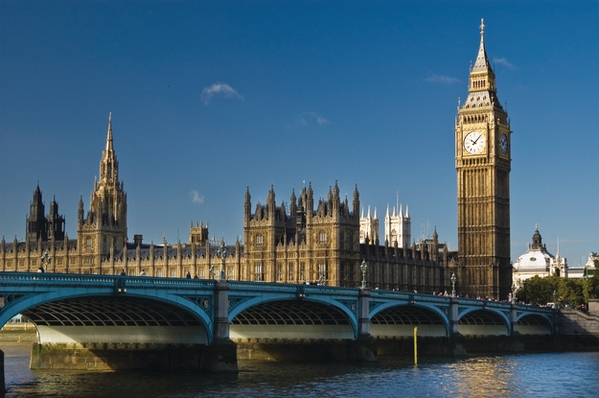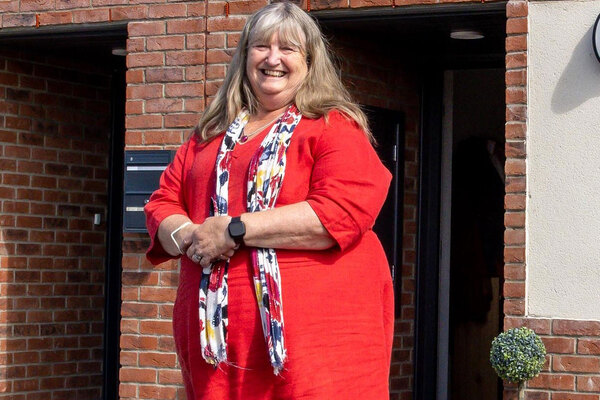Taking the strain
If the housing legacy of Margaret Thatcher Mark I was about dismantling much of what had gone before, Mark II created even more of what we have now.
Thatcher’s first two terms saw the right to buy, cuts in subsidies to council housing and the promotion of home ownership (see the first part of this blog). Mark II added big changes for private renting, housing associations and housing benefit, though not without some hiccups along the way.
The politician with a reputation for boldly acting on conviction could be cautious when she wanted to be too. It seems remarkable in retrospect that she left it until her third term before she fully deregulated the private rented sector (testament perhaps to the continuing power of accusations of Rachmanism). Market rents on new-build properties owned by approved bodies (but not individuals) were allowed from 1980 but few actually built any. It was not until 1988, nine years after becoming prime minister, that her government deregulated all new lets and introduced the assured shorthold tenancy. It did not seem so at the time, or for several years after, but those measures enabled the later creation of buy to let and the boom in the private rented sector that is still continuing now.
The same Act created the conditions for housing associations to become the major players in affordable housing that they are now. Private finance had existed before but the Act required them to use it as part of a mixed finance system with Housing Corporation grant. This was the first and probably the most successful example of public-private partnership seen in any part of the economy.
Both moves were part of a renewed radicalism in Thatcher’s third term. The right to buy had shrunk council housing in the 1980s but new housing minister William Waldegrave said that ‘the next big push after the right to buy should be to get rid of the state as a big landlord’.
However, things did not exactly go according to plan. Schemes like Tenants Choice and Housing Action Trusts flopped as tenants stubbornly refused to vote for a new landlord despite the promise of cash to improve their homes. Ironically, the most famous example of Tenants Choice came when tenants of flagship Conservative authority Westminster City Council used it to frustrate rather than enable a transfer of their homes to a private developer.
Ironically again the solution came from the original targets of the policy. local authorities began to see the advantages of transferring their stock to a housing association or setting up their own to free themselves from central government controls on government borrowing.
The Thatcher housing legacy is a powerful one. It would be wrong to say it was all down to her or her government (many of the same changes were introduced in other countries) and it was not all in one direction (it was Thatcher who introduced security of tenure for council tenants, for example). Nor was it all bad: the attack on council housing was about rolling back the state but it also brought improvements in management and financial innovation.
The legacy was modified under Labour, with the Decent Homes programme and almos, cuts in right to buy discounts and restoration of the homelessness safety net weakened by Major (not Thatcher), but not fundamentally reversed. It was not until 2006 that Labour managed to build start more new social homes (in England) than the 20,000 achieved in 1990, Thatcher’s final year.
So the Thatcher Mark II system that her government put in place 25 years ago is still the basis of the one we have now, though the coalition’s programme of near-market rents and fixed-term tenancies look very much like a Mark III.
However, the Thatcher legacy also includes another key area of policy that resonates to this day. The result of Mark II was higher rents. The housing benefit bill almost doubled – not in the 10 years that the coalition is now using as justification for its cuts - but in a mere five years.
John Moore, the new secretary of state for health and social security in 1987, believed he knew what the problem was. Much as Iain Duncan Smith argues 25 years later, he thought it was a ‘culture of dependency’. Claimants had to be moved from ‘dependence to independence’ and ‘help targeted where need is greatest’. The problem, then as now, was that a combination of his own government’s housing, economic and labour market policies meant that more and more people became reliant on the state to pay their rent. The rising housing benefit bill was the result of deliberate choices by the government.
The answer, then as now, was seen to be benefit reform. However, as IDS is discovering 25 years later, that is easier said than done. When a limited form of housing benefit was introduced in 1983 the Times called it ‘the biggest administrative fiasco in the history of the welfare state’. It was introduced in a huge rush, with endless amendments to the computer system (sound familiar?) and with such a focus on reducing civil service jobs that the result was disaster.
According to Nicholas Timmins (whose Five Giants: A Biography of the Welfare State I am again using as a key source for this blog):
‘Across the country, dozens of council housing offices locked their doors early, took phones off the hook and locked long queues outside as they attempted to sort out backlogs which left claimants without rent and rate payments for weeks and in some cases for months. In places the police had to be called to quell disturbances. Evictions mounted. Private as well as public landlords were in despair.’
The full system of housing benefit as we know it today was agreed in 1985 and introduced in April 1988 accompanied by cuts of £650 million in funding. The results were again disastrous and again have contemporary resonance. According to Timmins:
‘In the Autumn of 1987 the scale of what that meant became clear: close to six million losers from housing benefit alone, one million of whom would be losing the benefit entirely. Come April, MPs found themselves deluged with letters from those affected. People on incomes of as little as £100 a week found themselves £10 worse off.’
Two weeks after implementation, Moore was forced into a u-turn that restored £100 million of the cuts. However, another of his changes, the withdrawal of benefits from the under-18s in 1988 that triggered an explosion of youth homelessness, came back to haunt him. A year later he was sacked and replaced by Tony Newton.
If the contemporary parallels are not clear enough already, a few weeks before his death in March 2012, the now Lord Newton had some advice for current ministers in one of the final House of Lords debates on the bedroom tax:
‘I am slightly scarred by one bit of experience. As part of the social security reforms in which I played a modest part alongside my noble friend Lord Fowler in the mid-1980s, we proposed some fairly draconian changes in housing benefit, which were, to be blunt, forced on us by the Treasury… In my recollection, although I have not checked the books, the impact of those changes was such that the then Prime Minister ordered their reversal within a month because the flak simply could not be withstood. That is the risk the Government are running here, and I hope they will think about it very hard.’
By November 1990 the era of Margaret Thatcher was over. A few months later we had a new housing minister, Sir George Young, telling us that ‘housing benefit will take the strain’. It seemed unlikely even at the time.










